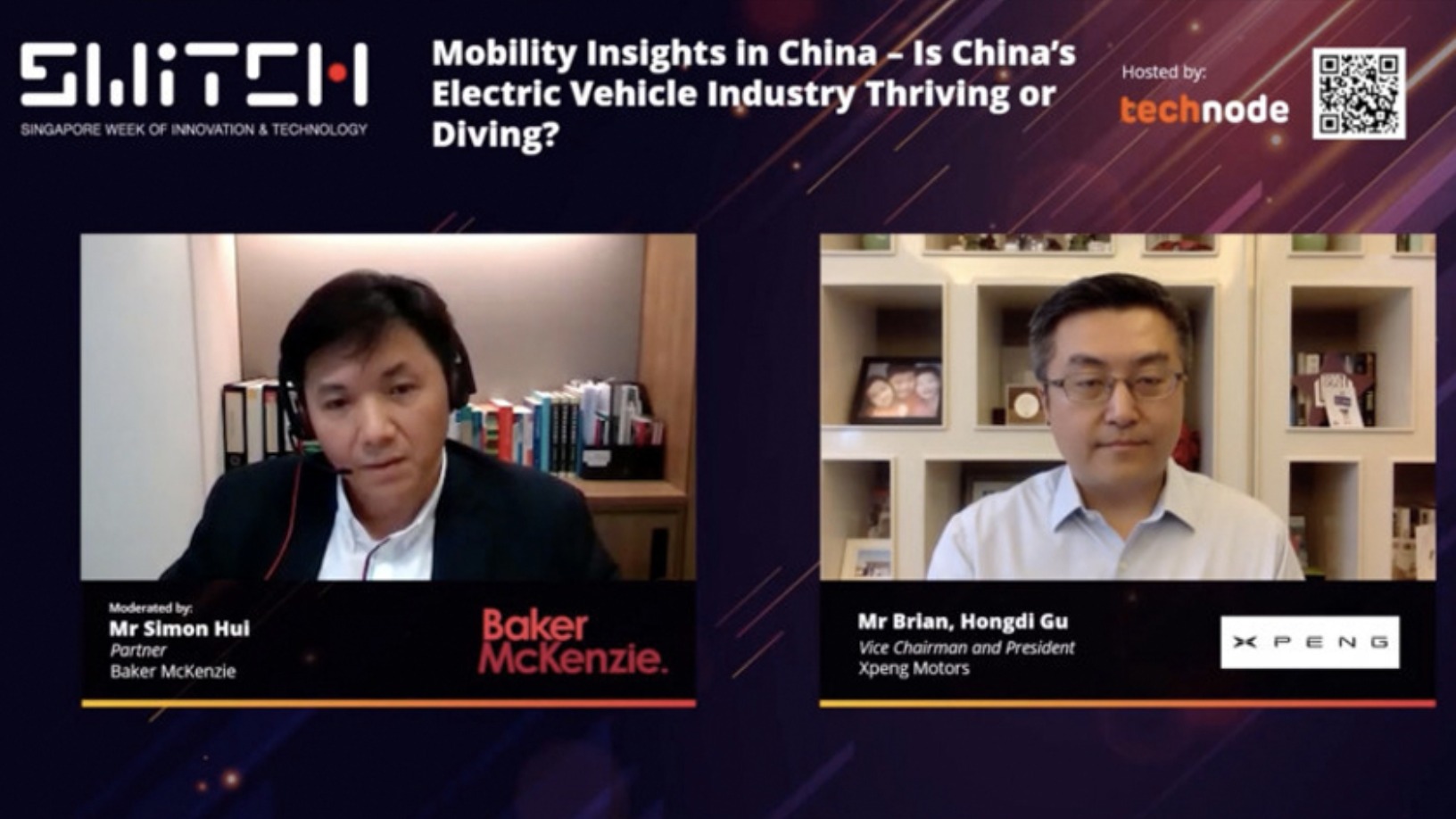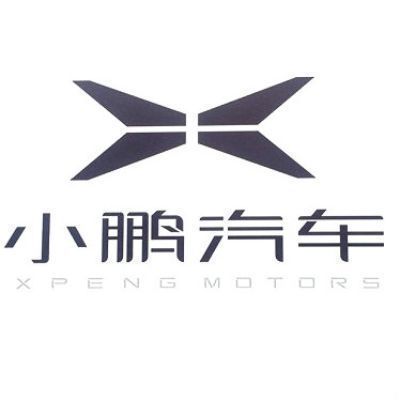The trio of US-listed Chinese electric vehicle (EV) makers NIO, Xpeng Motors and Li Auto are the new stars of auto stocks as their combined market capitalization exceeded that of GM, Ford and Fiat Chrysler, the US’ three largest automakers, for the first time ever, in October.
Sales of the Chinese EV makers are posting strong growth momentum, even though they continue to lag those of Tesla’s, the best-selling EV brand in China. Xpeng, for instance, said it sold near 2.7 times more cars in the third quarter of 2020 from the year-ago period.
Xpeng’s Vice Chairman and President Brian Gu continues to be bullish on China, the world’s largest EV market. Citing government support and incentives that have boosted demand the past five years, he also noted the importance of falling EV battery cost. Prices have been decreasing over 15% yearly since 2018, which will enable EVs to achieve price parity with conventional cars in the next two years.
Gu was speaking in a December 11 talk moderated by Simon Hui, Partner at global law firm Baker Mckenzie, during the Singapore Week of Innovation and TeCHnology (SWITCH) 2020. He also described the challenges and opportunities facing Chinese EV makers, as well as their moves to test markets abroad, especially in Europe. “Europe is even a bigger EV market than China this year, which is kind of surprising,” he said.
The following discussion has been edited for length and clarity.
Simon Hui: China's new energy vehicle sales have regained their momentum, after a double-digit rebound in the third quarter. What are the major causes for the recent rally?
Brian Gu: At the beginning of this year, the market was impacted by the Covid-19 pandemic and sales in the first quarter fell to the bottom. But since then, we've seen a very strong rebound. In the third quarter, overall auto sales in China were up over 60% and EV sales tripled, compared with the first-quarter period.
There are a number of factors driving this. In the last five or six years, China has spent a lot of money and effort to encourage the building up of the EV sector, developing infrastructure for charging as well as supporting the industry’s manufacturing and supply chain. The government has also been offering subsidies and other incentives to encourage EV purchases, including increasing the supply of license plates for EVs in some of the large cities, where there are strict restrictions on the issuance of license plates for conventional cars. The effectiveness of such measures is slowly being felt over the last few years.
Meanwhile, EV makers at home and abroad have started introducing very competitive and attractive products. Tesla’s Model 3 is selling very well this year. The cars are manufactured in China, and the price is very competitive. We launched our second model, P7, in the middle of this year, which is selling extremely well. The availability of such models has attracted more buyers.
Globally speaking, there are two major obstacles for EV uptake – range anxiety and the higher cost of ownership than for gas vehicles. How can Chinese EV players remove these barriers?
Gu: When I joined the industry about three years ago, most of the vehicles could drive about 100–200 kilometers per charge, which didn’t get them from city to city. Drivers always had to worry about charging. Charging facilities were scarce a few years ago. Both greatly limited consumers' adoption of EVs.
Now EVs in the market have a much longer range. Even our cheapest model has a driving range of 520 kilometers per charge, and the P7 has a pre-charge range of over 700 kilometers. That greatly alleviates range anxiety. For example, with the P7, I can drive from Guangzhou to Shenzhen, and back, without worrying about charging.
The second way to deal with range anxiety is having more abundant charging infrastructure. On average, over 50% of drivers have home chargers installed in their parking lots or garages, which means that they don't need to worry about charging because they can plug in overnight and then drive 500–700 kilometers.
For those who don’t have home chargers, we actually offer an extensive supercharging network, which is our own. On top of that, there's a large network of public charging facilities. Going forward, with more abundant charging infrastructure, drivers’ range anxiety will come down substantially.
On the cost side, we're also seeing a similar pattern of inflection point coming very soon. EV, as a product, typically is more expensive than a conventional car of an equal size and comparably-packed features, because the battery is very expensive. Close to 50% of an EV’s cost comes from the battery, but that cost is coming down really fast. In the last two years, our battery cost has decreased by over 15% per year, which is much faster than the cost reduction of other car parts. That level of cost decline is continuing. As for the cost of EVs, I think it will be on parity with conventional counterparts in two years.
If you lay out the top ownership costs of a gas engine vehicle, they include the costs of gas and maintenance. Comparatively, the cost of owning an EV is already very competitive. Gas is probably five times more expensive than electricity for the same range. And with an EV, you don't need to pay for expensive services like oil change, transmission change, etc. So, it's much cheaper to service and maintain an EV, and the total ownership cost is approaching parity very soon. That’s also a reason why we're seeing the pickup in EV sales this year.
Statistics indicate that China already has the world's largest EV charging network, with 1.4m charging piles as of September this year. What opportunities does this offer to EV makers in terms of running charging facilities? Do you see any challenges doing that?
Gu: Charging facilities will become more ubiquitous, just like gas stations. Over the last 50 years, China has built a wide gas station network. I think the same will happen to charging infrastructure.
There are plenty of public charging facilities today. But the user experience is mixed. Most of the charging piles are operated by state-owned companies like South Grid or State Grid, or by third-party charging companies like TELD or StarCharge. Their charging piles may not be that convenient or easy to use. With Xpeng’s own dedicated charging network, we offer only supercharging, enabling drivers to charge their vehicles in the shortest time. Over time, there will be different layers of charging facilities in the market, not only dedicated facilities to provide the best level of service, but also ancillary third-party charging networks that everyone can tap.
In my view, charging as a business will be very attractive because people will become used to using charging stations. Given the number of EVs on the roads, the utilization rate of charging facilities will be pretty high. At some point, I think it will be a very profitable business. We're just at the very beginning. Over time, there will be more companies, and more capital and resources, devoted to building a much more extensive charging network. In turn, that will spur EV adoption as well.
Some of the established carmakers are also moving into the EV market. One of the reasons attracting them is the ability to use their products to collect data from drivers. Many predict that data will be a key commodity in the future. What are your thoughts on this?
Gu: I think it's very difficult to call data a commodity. As a company, you collect different data, but how to use that data is a differentiating capability. Not all EV companies have the same ability to use data to quickly improve driver experience.
Our cars are also collecting data. For example, the P7 has 31 sensors on the vehicle, 14 cameras and 12 radars, including millimeter wave radar supersonic radar. So we have a lot of collected data about the car itself, as well as of the driver’s driving behaviors.
That’s the advantage of a smart EV. Not everybody can make smart EVs today. There are many EV makers in the world and in China as well, and they are simply trying to come up with a car powered by electricity. What differentiates us from our peers is the ability to collect data and use that data to improve the driver’s experience inside the cockpit.
Competition in China’s EV market has accelerated. And there are a growing number of smaller players on the brink of collapse. What are the key differences between Xpeng and its peers?
Gu: Unlike many EV startups, we don’t think EV is only for the super luxury or the super premium segment. These consumers might be the early adopters, but we value the opportunities presented by the middle segment, the RMB 150,000–300,000. The price range of others like NIO and Li Auto is about RMB 350,000–400,000, making the EV similar to a luxury product.
From the industry perspective, the cost parity is coming close, which allows us to make products for a much bigger market. Designing smart EVs for this middle to high-end market segment is probably the right strategy. What’s more, it’s also the largest segment that represents close to 50% of the auto sales in China.
Tesla has set up its own factory in China. Other global carmakers have also started to introduce EVs to the market. What is your assessment of the impact of these foreign carmakers on China’s EV market? What challenges do they pose to domestic players like Xpeng?
Gu: They are coming for sure; we have to be ready for it. All these players, like Tesla, have leading brands and technology advantages that they have enjoyed over the years. In China, we do like to see good products, which will attract drivers to switch from conventional autos to smart EVs. That shift requires the collaborative effort of all players, at home and from abroad. Having these very smart EV products, which are beautifully designed and packed with technology, will only turbocharge the conversion from traditional autos to new EVs.
OEMs and traditional automakers have been trying very hard for years, but they have not enjoyed success in the EV market, because competing in this segment requires different capabilities. If you want to design products that meet people’s expectations, such as the smart features of autonomous driving, it’s not an easy task for global OEMs who are still machinery companies. It will take a very long time for them to come up with competitive products. In the last year or two, the products introduced by global OEMs have not been competitive, with shorter range than domestic products. They don’t have the software and smart interface. But they are catching up now. They have the best resources and strong brands, though so far they have been behind in technology development.
We just need to focus on our differentiating capabilities and devote a lot of effort to smart applications, enabling drivers to enjoy a different experience inside the cockpit. Now, we have the all-around scenario voice command system so drivers don't need to do anything, they can just talk to their car.
That is going to be the way Chinese drivers drive their vehicles. That is something I don't think the foreign players can do at the moment. They are sure to catch up, but I hope we can rapidly develop these technologies and stay ahead of the curve.
Meanwhile, the Chinese players, including EV makers and battery suppliers, are going overseas and building a stronger presence in the global supply chain. Xpeng initiated sales in Norway this year. Do you think now is the right time for the China-made green EVs to go abroad?
Gu: It's not surprising that all these players, include Xpeng, are looking at Europe or other global markets. Europe is growing really fast, and I think it’s even a bigger EV market than China this year, which is kind of surprising. It is also a market with a strong infrastructure built up and customer preference. In Norway, more than 50% of new car sales are EVs, compared with less than 5% in China. This poses a very interesting opportunity for Chinese companies. Our products are very competitive in terms of features, range and pricing, and we can bring the products to the global market.
Implementing international strategies always takes a longer time. It's not easy to understand well a foreign market and build a brand that would appeal to customers there. We will take our time. The shipment to Norway – a very small batch – is the first step. We're working with a distributor in Norway and building a team at the same time. We want to do some testing for brand presence in Europe, in order to figure out how to tackle the huge opportunity. It's a long-term strategy for us. As a global company, we have the aspiration to go global because smart EVs should not just be a product for China; they should be enjoyed by global customers. Given the potential of the global market, we should start doing it now, for the long term.












